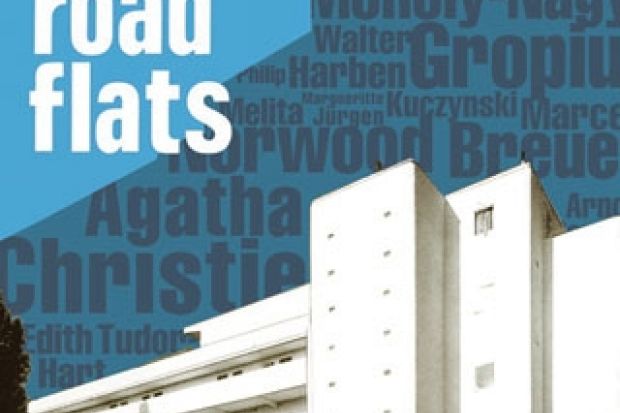The Isokon building, a striking Modernist block of flats built in 1936 in Hampstead, North London, is used here as a vehicle by David Burke, a historian of intelligence and international relations, to explore a particular and very fascinating slice of British history. Known as the Lawn Road Flats, the block attracted what seems to have been an unusually large population of artists, writers, architects and spies, sometimes connecting, sometimes not.
Socialism is the thread that weaves through the narrative and connects the protagonists of the story to the very architecture of the building itself. Its inhabitants included some of the most prominent Soviet agents working in Britain at the time, including Arnold Deutsch, the controller of the group of spies recruited at the University of Cambridge who came to be known as the Magnificent Five. It also became the home of a remarkable group of architects and artists escaping Nazism, including Walter Gropius, the charismatic founder of the Bauhaus school of art and architecture, the artist László Moholy-Nagy and the furniture designer Marcel Breuer, whose work is as ubiquitous now as it was then.
Add to this the presence of the Australian archaeologist V. Gordon Childe and Agatha Christie, who wrote her only spy novel while living there, and you have the makings of quite a history. It would be interesting to compare this block with another North London Modernist housing block, Highpoint in Highgate, the home of Michael Ventris, who deciphered Linear B, to find out how unusual it really was.
A list of about 60 acronyms at the start of the book, many of them relating to Communist political organisations, is daunting, but you shouldn’t let this put you off. Burke intersperses his painstakingly detailed research with fascinating glimpses of life at the time, drawing on stories and letters that bring his account into vivid relief.
As an architect myself, the grumblings of the Isokon’s architect, Wells Coates, sounded familiar. Apparently he was barely mentioned at the building’s opening ceremony. Indeed, he was “rather offhandedly referred to as Mr Russell Coates” and the credit for the ideas behind the building were given to Molly Pritchard, who with her husband Jack was instrumental in building the block and creating its community.
Voted the “Ugliest Building in London” in 1946 by Cyril Connolly’s influential journal Horizon, the Isokon was one of the first Modernist buildings in Britain – a country famously slow to take up the cause. It obviously owes much to the theories of Le Corbusier, offering a rather British take on his ideas of community and liberation, and it originally provided many of the facilities of a rather grand hotel, including a dining club. The bar in the basement acted as the nexus of communal life. Discussions of wine lists, real ale and menus were a vital part of the intellectual mix, and the building even spawned one of the first television chefs.
For me, there is a temptation to make analogies between the architecture and the way of life in the building, and this could have been further exploited. It is an irony that a place characterised by airy openness and vast expanses of glass should have been home to such subterfuge. Contemporary photos of the building in use are wonderfully atmospheric, but so much more could be done to make the archival research manifest visually. The spatial and temporal relationships between protagonists could have been mapped out with drawings and plans, in a way that would have made the connectivity of characters much clearer, although admittedly this is the kind of interdisciplinary work not common in histories. Having said this, Burke brings a refreshing lack of baggage and an attention to detail to his architectural subjects, which bodes well for his accounts of the other protagonists whose work I know less well.
The Lawn Road Flats: Spies, Writers and Artists
By David Burke
Boydell & Brewer, 309pp, £25.00
ISBN 9781843837831
Published 20 March 2014
Register to continue
Why register?
- Registration is free and only takes a moment
- Once registered, you can read 3 articles a month
- Sign up for our newsletter
Subscribe
Or subscribe for unlimited access to:
- Unlimited access to news, views, insights & reviews
- Digital editions
- Digital access to THE’s university and college rankings analysis
Already registered or a current subscriber? Login





